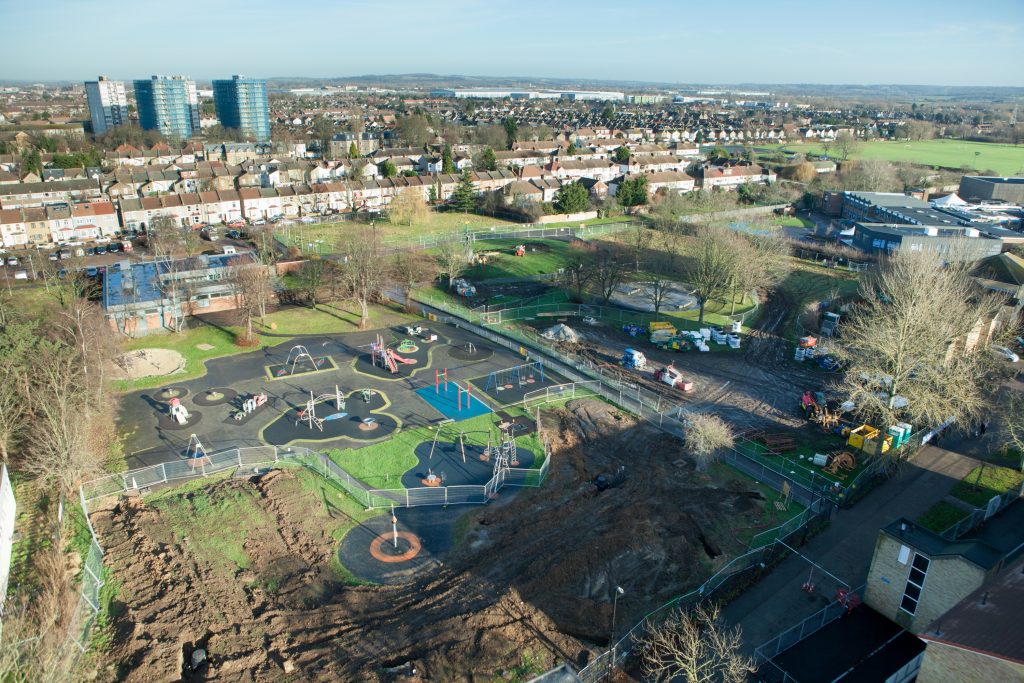
A new research project launched by greenspace scotland will explore how we can transform urban landscapes to meet low carbon heat ambitions.
Green Heat in Greenspaces (GHiGs) is described as building on greenspace scotland’s ParkPower project bringing together half of Scotland’s councils together with a range of public sector bodies to investigate the role of urban greenspace in supporting the transition to low carbon heat.
Scotland is facing a major challenge to decouple its dependence on carbon-rich fossil fuels to heat homes and businesses.
John Maslen, greenspace scotland’s ParkPower programme manager said, “To have any chance of achieving our world-leading decarbonisation ambitions, Scotland needs to surge up the low carbon heat league table of European nations to escape its current position in the relegation zone. Climate scientists and the Scottish Government appear to be on the same page – heat needs a radical overhaul. The big unanswered question is ‘how?’ We believe that generating heat from urban greenspace using heat pumps and supplying this to buildings through a network of pipes has a key part to play in any solution.”
greenspace scotland said the use of heat pumps to take heat from the ground, water sources or the air is a well-worn ‘pathway’ in countries like Sweden and Austria where installations are widespread. One key challenge, the organisation said, facing both heat pumps and other heat projects that differentiates them from electricity projects, is the cost of transport. It is expensive to transport heat over long distances so the viability of heat schemes is optimised by generating heat in close proximity to where it is needed.
Heat demand is highest within our urban centres. However, space in these locations is at a premium. greenspace scotland explained that while fossil fuel-based heating solutions have tended to require ‘minimal space’, their green counterparts are ‘generally more space hungry’. Therefore, there is a need to find open space in towns and cities that could be used for new low carbon heat solutions.
The new research project aims to address this. Green Heat in Greenspaces will explore how areas of green space across Scotland can contribute to transforming the urban landscape of the future to one based on low carbon heat.
The project is led by greenspace scotland and will be supported by low carbon energy specialists Ramboll.
Paul Steen, head of the energy team at Ramboll said, “Our work on the ParkPower programme to date clearly demonstrates that urban green space can play a critical enabling role in the generation and transmission of low carbon heat. The GHiGs project will allow us to explore its full potential Scotland-wide, short-list candidate sites and feed evidence into wider strategic energy planning.”
GHiGs has secured support from partners across the public and third sectors including local authorities, Improvement Service, Scottish Environment Protection Agency, Scottish Enterprise, NHS Scotland, Scottish Land Commission, Architecture & Design Scotland, Historic Environment Scotland, sportscotland, Strathclyde University and Zero Waste Scotland. UK-wide organisations like the British Geological Survey and Ordnance Survey are also contributing specialist expertise.
The outputs from the project, due in early 2021, will enable assessment of the scale of opportunity across Scotland and provide green space owners with data to identify the most promising sites to progress.
Julie Procter, chief executive of greenspace scotland commented, “This exciting project will allow us to evaluate the scale of contribution that Scotland’s green spaces can make towards our low carbon heat transition. The number and range of partners involved in GHiGs demonstrates the widespread interest across the public sector in optimising use of their land assets to address decarbonisation objectives. It is imperative we find a way to balance the potential value of these sites as community-scale boilers with their equally vital roles in supporting our health, amenity and education.”








